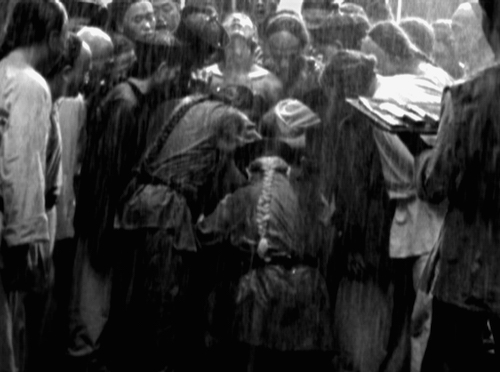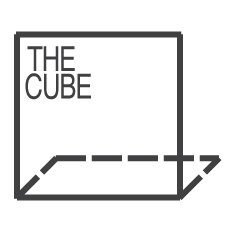
Chen Chieh-jen: Lingchi – Echoes of a Historical Photograph

Lingchi – Echoes of a Historical Photograph ,super 16mm transferred to DVD.black & white.sound in selected portions.21‘ 04” three-channel.continuous loop © Chen Chieh-jen
Artwork Context and Introduction
The idea for the video artwork Lingchi came from a photograph of lingchi torture (death by a thousand cuts) taken by a French soldier in China in 1904 or 1905. (1)
Historically, three instances of lingchi have been photographed by different Europeans in China, and have been used to testify to the barbarity of the Chinese people. Appealing to novelty hunters, these photographs were made into postcards and distributed in Europe, and even considered by several western observers to be an oriental version of the suffering of Christ. In his 1961 book The Tears of Eros, Georges Bataille develops a philosophical explanation of lingchi torture, thereby making lingchi and lingchi images widely known among western intellectuals. Using the notion of erotic ecstasy, Bataille describes the victim of lingchi as being in a condition he calls limit experience, which has become the most often cited explanation of lingchi in the West.
More recently, other scholars including the French historian Jérome Bourgon have expanded lingchi studies, researching differences between eastern and western law, ethics, culture and philosophy, thereby rendering lingchi and its images as a composite of different viewpoints and imagery. (2)
In 1996, using computer graphics technology, Chen Chieh-jen embarked on a revision of the lingchi photographs that Georges Bataille discussed in his book. In his work, Chen brought to light the then yet-to-be-discussed history of the photographed concealed within the history of photography.
In 2002, Chen continued to meticulously research, uncover and extend the significance of lingchi imagery with video. According to Chen, the moment of mutual regard between the lingchi victim and the camera held by the European, as well as the lingchi image frozen at that moment on film, not only embodies the barbarity of feudal China’s legal system, but also foreshadows the non-western world’s experience of modernization. This is because, in the name of modernization, agents of imperial and colonial domination have inflicted every form of new dismemberment technology on both the colonized and the photographed.
Chen sees the two dark wounds in the chest of the lingchi victim in the photograph as conduits between the past and future. With his video camera, Chen brings viewers into the world within these wounds, where images appear of Beijing’s Old Summer Palace being first destroyed by British and French forces (1860) and again by the Eight-Nation Alliance (1900), human experimentation at Japan’s Unit 731 located in Harbin during the Second Sino-Japanese War and WWII, political prisoners in Taiwan during the Cold War era, contaminated sites in Taiwan left behind by transnational corporations, and the remains of Taiwanese factories abandoned due to industrial off-shoring. Looking out of the wounds, scenes of a western photographer in Qing Dynasty China and groups of unemployed laborers drift past. Entering these wounds we see the ruins resulting from acts of dismemberment and abandonment over the course of history, and when looking out, today’s unemployed laborers. In this way, Chen suggests that lingchi has never really ended. (3)
In the original lingchi photograph the victim gazes at the horizon while faintly smiling. Chen believes this perplexing smile is a powerful vortex that has thrown the countless viewers into a state of intense confusion, a confusion which has compelled them to seek possible interpretations of the smile, and thus has generated a variety of different imagery. Furthermore, this difficult to explain smile relates to Bataille’s notion that there exist two important life experiences in lingchi—that of Christian martyrs silently praying on the cross and followers of Buddha meditating on bone piles—both of which suggest a peace transcending joy that arises from intense suffering. Chen has also stated that this smile is related in spirit to the important Buddhist concept of pariṇāma. (4)
Chen explains the relationship between pariṇāma and the smile as follows, “This victim of lingchi has no way of escaping; he is bound, dismembered, photographed, force fed opium, and in a daze. Seemingly incapable of taking any action whatsoever, he uses a subtle gesture—a smile—and the image fixing capacity of the camera held by the photographer, a representative figure of colonizing force, to create intense confusion for subsequent viewers of the photo. This confusion has transformed the victim’s smile into an image that has continued to dialog with viewers long after it was photographed, and long after the victim was executed by dismemberment. Under these extreme and impossible conditions, the victim performed an active gesture that cannot be eradicated by death or time.”
Following his belief that the lingchi victim’s smile was an active attempt to dialog with future viewers, Chen constructs a meta-image of the photograph with his video Lingchi – Echoes of a Historical Photograph.(5) In this video, Chen develops alternative associations and discourses together with his viewers—people who are also suffering through lingchi, but one caused by today’s imperceptibly advancing mechanisms of governance. Furthermore, Chen extends the meaning and dynamic of a small subversive action from the past in today’s political context of counter-terrorism, biopolitics, society of spectacle and neoliberalism. – H.J.
Notes
1. The photograph referenced in Chen Chieh-jen’s video is the same one discussed by Georges Bataille in his book The Tears of Eros. In the book Bataille refers to a friend’s account for the photograph’s background information, including the victim’s name, occupation and crime, as well as the name of the photographer who took the picture. According to research by Dr Jérome Bourgon and others, however, this information is incorrect, and currently the photograph’s origin and related information still cannot be reliably confirmed.
2. For research and articles related to lingchi, see the website Chinese Torture: http://turandot.vcea.net.
3. Lingchi, also described as torture and death by a thousand cuts, was originally a punishment meted out in feudal China to those who had committed the most heinous crimes, and was officially abolished in 1905. Contemporary use of the term lingchi, as well as shaqiandao (death by a thousand cuts) indicates obligatory, endless, inhumane and repetitive tasks; or other unendurable torment.
4. The term pariṇāma was originally derived from a Hindu ritual performed to relieve the anguish of departed souls, and is commonly translated as transference of merit. After this tradition was assimilated by Mahāyāna Buddhism, the term also indicated the meaning of sharing the enlightenment and virtue which results from Buddhist practice with all living things. Pariṇāma, therefore, also indicates the act of connecting and conversing with others.
5. The use of meta-image in Chen Chieh-jen’s video includes the mixing of historical and contemporary clothing, hair styles, and props, with a re-presentation of the lingchi process that does not necessarily conform with historical fact.
6. The video is silent, with the exception of four faint, several-second-long sounds added in post production using a special device that recorded electromagnetic waves produced by Chen Chieh-jen’s skin. Performers in the video included actors from small theater groups, students and unemployed laborers.


